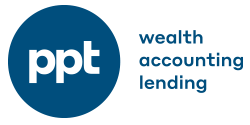Budget 2014/15: Education
Universities able to set their own fees
The cost of tertiary education will go up with Universities and other educational providers able to provide their own fee structure (or ‘contribution’ structure as they call it).
The current caps on student contributions that higher education providers are able to charge will be removed from 1 January 2016 for students who accept an offer to commence a course from 14 May 2014. Higher education providers will be responsible for setting their own course fees. In line with this change, the Government is cutting back funding through the Commonwealth Grant Scheme for higher education courses at diploma, advanced diploma, associate degree and bachelor degree level (where the higher education provider is registered with the Tertiary Education Quality and Standards Agency and the course has been accredited).
Date of effect: From 14 May 2014 for 1 January 2016
In addition, the Government will reduce research training scheme funding from 1 January 2016 and allow higher education providers to charge student contributions for higher degrees by research (including doctoral and masters degrees).
Removing the loan fee for FEE-HELP
The Government will remove the 25% loan fee applied to FEE-HELP loans for fee-paying undergraduate courses and 20% loan fee applied to VET FEE-HELP loans for eligible full fee-paying students in higher level vocational education and training courses.
Changes to student loan programs
The HECS-HELP benefit that was intended to provide an incentive for graduates of particular courses to take up related occupations or work in specified locations will end from 2015/2016.
Date of effect: From 2015/2016
While the Higher Education Loan Programme (HELP) will continue, the income threshold for payment of HELP debts commencing in 2016/2017 will reduce. A new minimum threshold will be established for the repayment of HELP debts, set at 90% of the minimum threshold that would otherwise have applied in 2016/2017. The new minimum threshold is currently estimated to be $50,638 in 2016/2017. A new repayment rate of 2% of repayment income will be applied to debtors with incomes above the new minimum threshold.
Plus, annual indexation applied to HELP debts will be adjusted from the CPI to a rate equivalent to the yields on 10 year bonds issued by the Australian Government, capped at 6.0% per annum, from 1 June 2016.
Date of effect: From 2016/2017
Trade support loans
The Trade Support Loans Programme provides loans to apprentices undertaking a Certificate III or IV qualification that leads to an occupation on the National Skills Needs List. The loans will be provided at concessional interest rates and capped at $8,000 in the first year of the apprenticeship, $6,000 in the second, $4,000 in the third and $2,000 in the fourth. Tradies will need to start repaying loans once their income exceeds $53,345 in 2014/2015.
The Government has also flagged that it is considering letting the private sector administer the loans from 2015/2016.
Date of effect: 2013/2014
To discuss how this may impact your circumstances please contact PPT on (03) 5331 3711.
DISCLAIMER: The material and contents provided in this publication are informative in nature only. It is not intended to be advice and you should not act specifically on the basis of this information alone. If expert assistance is required, professional advice should be obtained.


